Today there is no need to buy expensive discs to watch your favorite movies. The Internet offers free online multimedia. For convenient viewing, advanced users use a TV screen as a monitor. In this article, we will analyze how via HDMI.
The main advantage of this interface is the support high resolution, which the VGA-connector cannot boast of. On old TVs to connect external devices the tulip is most often used, and the new ones already have a jack for HDMI.
To connect an old TV model, you will have to try, since the search for a suitable cable with the necessary interfaces does not always end successfully. In any case, special adapters will always come to the aid of users. However, it should be remembered that the fewer connections, the better image... Therefore, if it is possible to buy a cable with the necessary connectors, then it is better to exclude the use of adapter devices.
Before connecting a laptop to a TV via HDMI, you should study in detail the interfaces of both devices. Is the cable found? We start connecting. Initially, you need to remove the power by connecting the cord. If the TV has S-Video, then it is better to use it, however, it is not recommended to use the DVI interface to connect to the TV, as the picture will be of very low quality.
Since it is easy to connect HDMI, we will not consider the order of connection by colors (if a tulip is connected to the TV). After the devices are connected, the TV turns on, then the computer. While the operating system is loading, a flicker will appear on the screen. This means that it is connecting to an external device. It is necessary to switch the TV to audio and video input (on the remote control this is the AV key). Thus, an external signal is connected to the input.
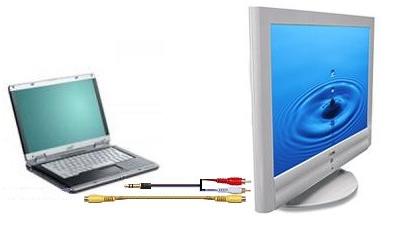
But how to connect a laptop to a TV via HDMI if the video card does not see the device? In this case, you need to change some of the computer settings. They will help you identify an external monitor and display an image on it.
In the properties of the video adapter, you must identify the new monitor. If a new one is used operating system Windows 7, then right-clicking with one click on the desktop brings up a window where you need to select the parameter item. In the menu that appears, click the "Find" button. And the TV will show the picture.

Since you can connect a laptop to a TV via HDMI using a fixed length cable, it is recommended that you pay attention to its size when purchasing. It has already been said that the use of adapters negatively affects the image quality. It is not recommended to buy a cable longer than two meters, as the excessively long cable does not transmit the signal to the full, partially drowning it out.
We've covered how to connect a laptop to a TV via HDMI. With the help of such a connection, the need to huddle at a computer monitor with the whole family disappears by itself, because now you can watch your favorite program online on big screen... Some users manage to hide the cable from the computer to the TV behind the baseboard, conveniently placing it in a special compartment. However, this will have to sacrifice image quality, because in order to hide the cable, you need to use a long cord.
Hello readers of the blog of the ComService company (Naberezhnye Chelny). In this article, we will figure out how to connect a laptop to a TV via HDMI. This will give you the opportunity to watch movies in FullHD quality on the big screen. Most likely, your TVs have a higher resolution than laptops, respectively, the picture will be clearer and the buzz will be greater. Plus, you can watch the whole family. For complete happiness it is better plug in projector, but not everyone has one. You can work behind the TV. Of course, we will lose in mobility, but the screen will fit more and comfort will increase. The HDMI connector is perfect for this. The cable transmits video and sound immediately, in digital format, without distortion, which eliminates the need to purchase an additional AUDIO cable. In general, there are some pluses.
Article structure
1. Connecting a laptop to a TV via HDMI
To connect a laptop to a TV you need HDMI cable.
You can buy it at any computer store.

We insert one end into the HDMI connector on
Second in HDMI TV
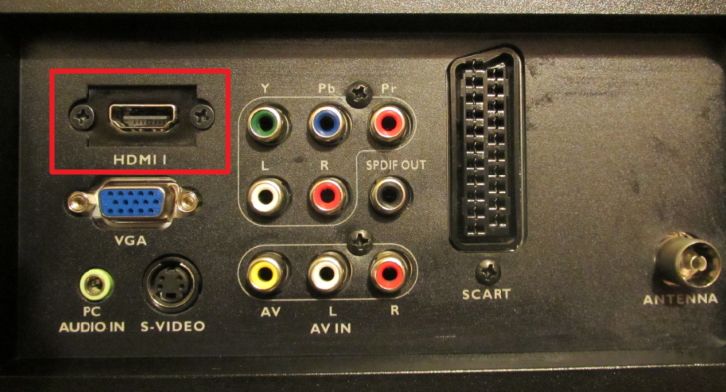
There may be several of these connectors on a TV. V given monitor-TV there are 2
We insert into any.
Select the TV signal source.
We press several times INPUT or HDMI

and switch to the desired input

An image from a laptop appears on the TV.

2.Customize screens
Hardware. To customize the screens of your TV and laptop, you can press the fn + f4 key (you may have another key, usually this key has an icon representing the monitor)
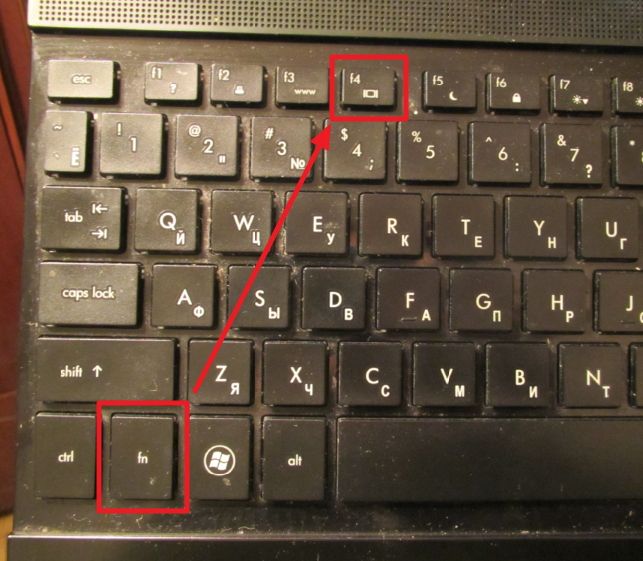
A four-item menu appears in the center of the screen. You can switch between them using the arrows on

Choose how you want to use the connected TV and press Enter.
Alternatively, hold down the fn key and press f4 repeatedly until the desired mode is selected. Then release all keys and the selected mode is activated.
Software. The same and more can be done programmatically. On an empty spot on the desktop, right-click and select Screen Resolution
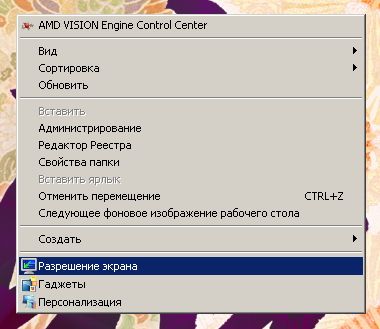
In the Multiple screens section from the drop-down menu, select the desired mode

If you selected "Display the desktop only by 2" or "Extend the desktop", then it will be possible to adjust the resolution of the TV (if for some reason it was incorrectly defined)
![]()
Actually, all the settings for comfortable use of the TV with.
3. Sound setting
When you connect a TV to a laptop, the image appears immediately, but the sound does not (for some reason I had it like that). That is, when watching a movie, the sound comes from the laptop speakers. To switch sound to the TV, do the following
In the menu using we look for "Sound"

On the "Playback" tab, on an empty space, click the right mouse button and set both checkboxes: Show disconnected devices and Show disconnected devices

Turn off the laptop speakers. To do this, right-click on Loudspeakers and select Disable
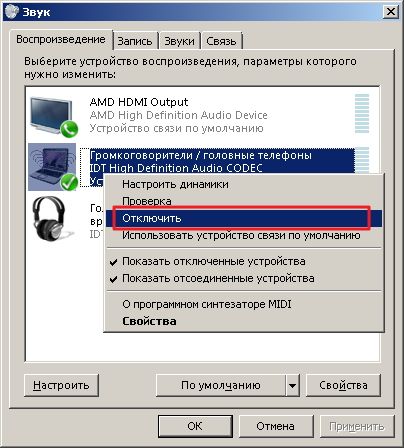
The sound should go to the TV.
That is, we turn on the TV if it is turned off.

and turn off everything else.
We enjoy watching movies in FullHD.
Conclusion
This article examined the possibility of connecting a laptop to a TV via HDMI. The main thing is the presence of a cable. In my case, the sound was not immediately transmitted to the TV. It was also just decided. One more moment. There is an opinion on the Internet that by connecting a TV to a laptop, you can not only work and watch movies, but also play. The latter confuses me, since these are stripped-down versions for stationary computers... They are designed to display images at a laptop screen resolution. If you connected a TV whose resolution is 2 times higher, the video card will have to be twice as heavy. That's why. You can play, but we will lose quality, or there will be brakes. And this will ruin the whole experience. In general, it seems to me that you will not be able to comfortably play from a laptop on a TV. A powerful stationary is needed here a computer.
The compact size of a laptop is convenient on the road or at work, but at home a diagonal of 14-17 inches is usually not enough for comfortable viewing of videos and other entertainment. Why not transfer the picture from your laptop display to your modern widescreen TV using HDMI? In practice, this is easier than it sounds. In general, first things first.
General information
Connecting a laptop to a TV using an HDMI cable allows you to transfer sound and picture. This does not require any specific knowledge and complex settings. The only prerequisite is support for HDMI interfaces on both devices.
In this example, we will connect an old 10-inch laptop asus to the TV samsung brand diagonal 81 cm.
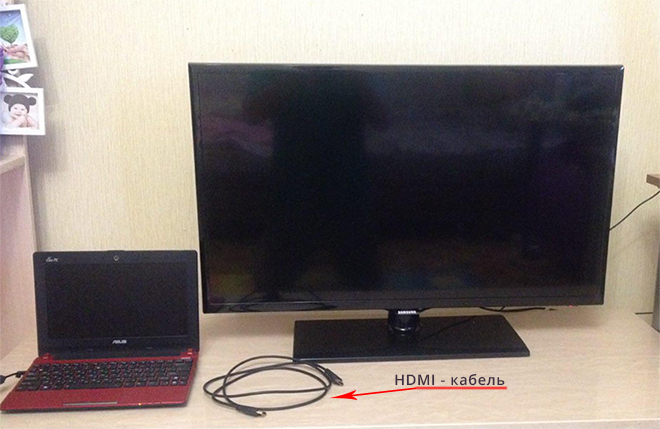
Preparation
So, to connect a laptop to a TV via HDMI, we need:
- 10-inch laptop;
- widescreen samsung TV;
- special HDMI cable;
- quite a bit of time
It remains only to find the necessary connectors (usually signed) and connect both devices, but where to get the cable?
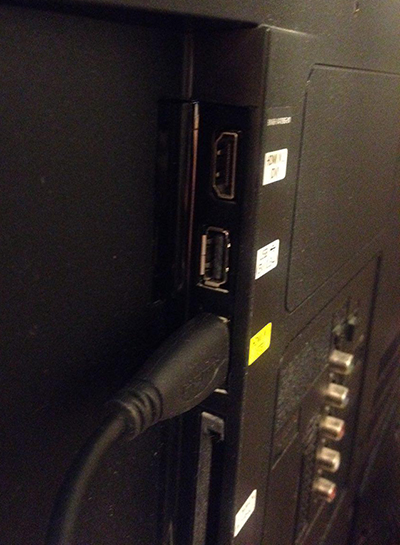
We connect the TV
For TVs of the Korean brand Samsung, an HDMI cable is often included in the package. In other cases, you will have to go to a computer hardware store.

Connecting hdmi cable to laptop
The only drawback of HDMI technology is the different quality of the cables sold. Therefore, the purchase must be approached responsibly.
Important: connect two devices to each other only after turning them off.
Setting up your TV
The difficulty lies in the impossibility of compiling a universal instruction for setting up all TVs. Even in different models the steps for connecting external devices sometimes differ from the same brand.
In short, you need to go to the choice of the source of the image. Usually this is a button on the remote, which is popularly called "exit", located in the upper rows.
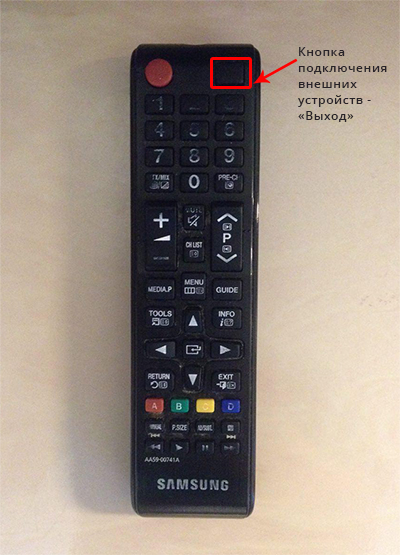
Click on it and you will see a list of all possible sources for displaying images on the screen: antenna, USB flash drives, card reader (if any) and HDMI.
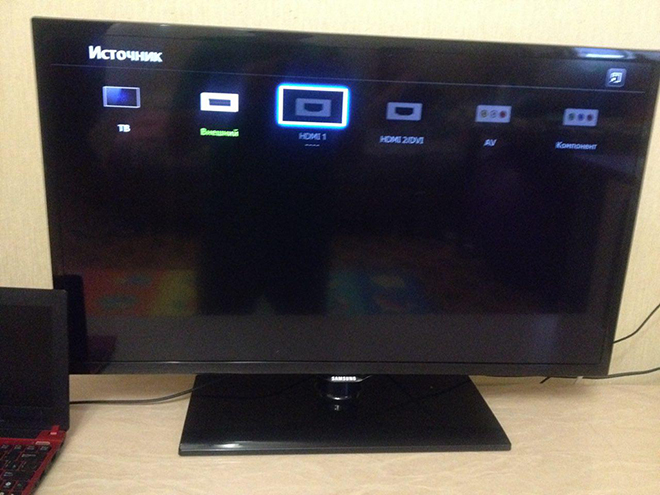
So you need to activate it by highlighting and pressing the selection button (usually this is "OK").
Laptop settings
Since the laptop is already turned on, and the default HDMI cable turned out to be of high quality, the TV will probably immediately display the picture from its display. That is, the settings as such are not required.
Now you can view photos on a large diagonal screen, broadcast video files from hard disk running games.
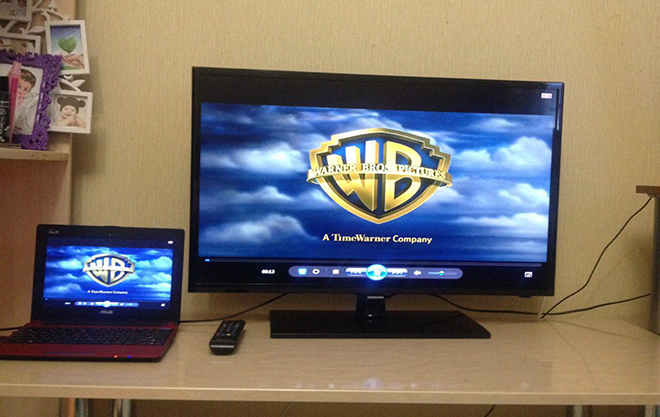
If something went wrong
Difficulties occasionally arise. For example, the TV set distorted the resolution or there is no image at all, and instead of it there is a black screen (the logo of your TV brand floating on it confirms the absence of a signal from the laptop). What can be done in this case?
On Windows 7, hold down the keys Win + P... This action will display a menu of ways to display the picture on the TV screen.

In this menu, you need to choose the most convenient option for displaying the picture.
If it doesn't work, follow these steps:
- Right-click on the desktop to bring up the context menu
- From the list go to "Screen Resolution"
- In a new window, next to the "Screen" label, set the value "Multiple monitors"
- Opposite the inscription "Multiple screens" set "Duplicate these screens"
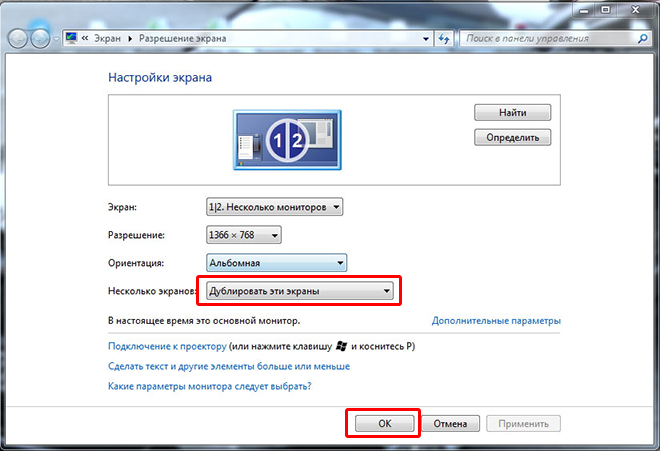
This is usually enough for the picture to appear. You can also adjust the resolution right there.
If you want the sound to come from the TV speakers, then in Windows, right-click on the speaker icon in the lower right corner and open "Playback Devices". There, just select your TV.

Using such a system, you are probably an advanced user and know the peculiarities of its configuration. Since the sound from the TV itself is usually needed to watch video directly from the laptop, you can simply select the audio output device in the video player. Such features are supported, for example, by the VLC player.
Output
Connecting a laptop to a large screen with an HDMI cable is easy and opens up great possibilities for using the computer for home entertainment and work. In most cases, no configuration is needed. All you have to do is select HDMI from the list of devices available to your TV and you can enjoy your laptop's workspace on an enlarged scale without loss of picture and sound quality.
In this article, I will talk about how to connect a laptop to a TV to broadcast a video signal to the screen. Let's also figure out the settings.
Modern TVs have many useful functions.
- Internet connection.
- Streaming video processing.
- Reading multimedia files from a portable hard drive.
But the advanced model is not able to perform some tasks that are subject to the computer.
Connecting a laptop to a TV will provide a range of conveniences previously unavailable that only sharing two devices can provide. Here are some of the benefits.
- Play computer games on the big screen, which will allow you to enjoy the delights of modern advanced graphics.
- Comfortable communication via Skype. You do not have to look at the interlocutor in a small display.
- Viewing presentations, slides, photographs is taken to a completely different level.
- Any movie is available directly. No need to first download the file to a USB flash drive, and then play it on the big screen. We turn on online and watch.
There are several ways to connect your TV and laptop. Each is quite simple - it does not require special technical training from a person. All that is needed is a communication cable and simple settings that will not take a lot of time. The more difficult thing is to determine the connection method that will provide the best sound and picture quality. To determine the available options, you need to study what communication interfaces are available on your laptop and TV.
Any modern computer model has VGA, HDMI connectors. Additionally, there may be slots DVI and S-Video. TVs have all the above connectors, plus there are RCA, Scart interfaces. To connect two devices, it is enough to connect the corresponding slots to each other using a special cable.
The number of interfaces shouldn't be intimidating. There is no specific connection procedure for each of them. Conventionally, the connection between a laptop and a TV receiver can be divided into three stages, regardless of the type of interface:
- We find similar connectors on a computer and a TV, choose from them the appropriate video / audio quality.
- Choosing the right cable. If necessary, we install adapters - but we try to do without them, since each adapter leads to a loss of quality.
- We configure the laptop video card.
HDMI connection
The HDMI connection is of the highest quality. This method most clearly conveys the video and audio signal. This requires only one cable through which all the necessary streams will be transported. Bandwidth video (permissible resolution) - 1920 x 1080 with an image frequency of 60 Hz. Sound transmission - 24 bits, 192 kHz.
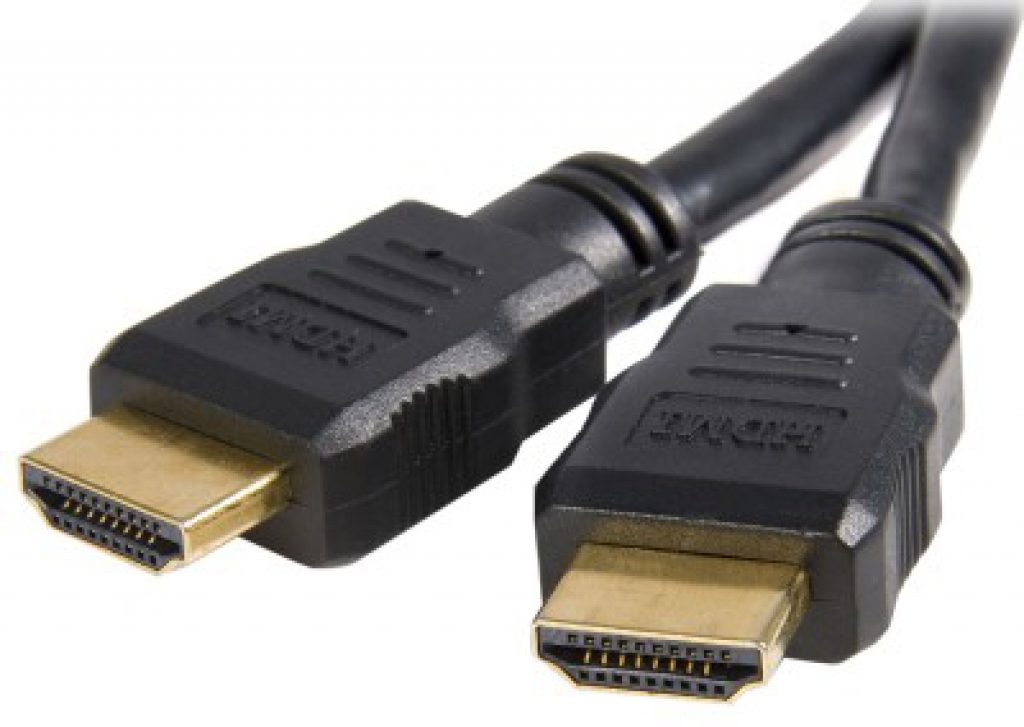
A distinctive feature of the HDMI connector is its trapezoidal shape. If one of the devices does not have such a slot, then you can buy or order an adapter converter. Its cost is low.
Once the cable is connected, you need to tune the TV by selecting the appropriate data channel. For this on the remote remote control the Source button answers.

Next, you need to configure the transmission of images from a laptop. In some computers, this process is automated, if not, then user intervention will be required.
Modern TVs have multiple HDMI slots. To transfer the image, you need to select exactly the one to which the cable is connected. This is done like this.
- Right button mouse click on free space desktop.
- A window will open where we select the "Screen Resolution" section.
- Next, in the "Display" section, we find and select the TV to which we are connected.
V latest version Windows (starting with 8), display settings are invoked with the win + C keys. A window opens with options for selecting the functions of the second screen: "Expand", "Only the second screen", "Duplicate". Our second option.
DisplayPort connection
The most modern video signal transmission interface is DP - DisplayPort. It has been specifically designed to deliver images at the highest resolution available. The upper bar of this indicator is 3840x2160 with an image intensity of 60 Hz.
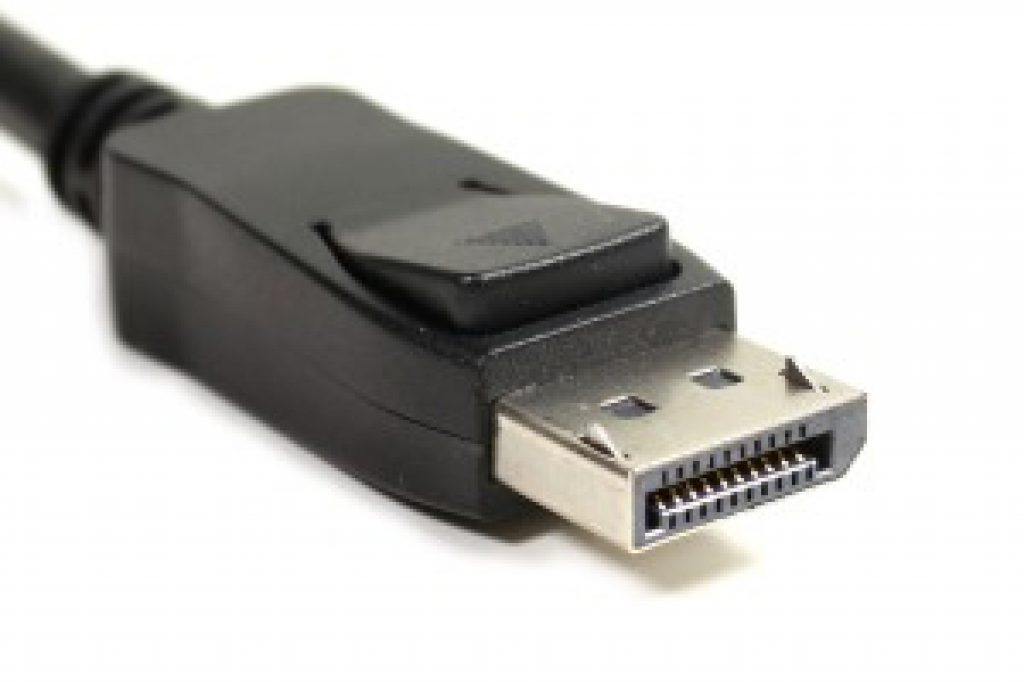
DisplayPort is fully compatible with DVI and HDMI, making it easy to connect to any modern device... An adapter is required to communicate with analog equipment.
Connecting using the DVI interface
This is the most common interface on the basis of which the connection between a computer and a monitor is built. DVI is compatible with DisplayPort and HDMI. There are three kinds of named interfaces in the world:
- DVI-D. Designed for transmission only digital signal, the resolution of which does not exceed 1920x1080 with a frequency of 60 Hz.
- DVI-I. It can transmit a signal similarly to the previous one, plus analog frequencies with a resolution of 1600x1200, a frequency of 60 Hz.
- DVI-I Dual Link. Capable of broadcasting 3D image. The maximum resolution of normal video signal is 2560x1600.
VGA connection
The main advantage is prevalence. It is found on all laptop models, both the oldest and the newest. The connection is carried out in the same way as in the previous versions - using the appropriate cable. Finding it is not a problem. It is enough to go to any electronics store. The disadvantage of the interface is that it only transmits the video signal.
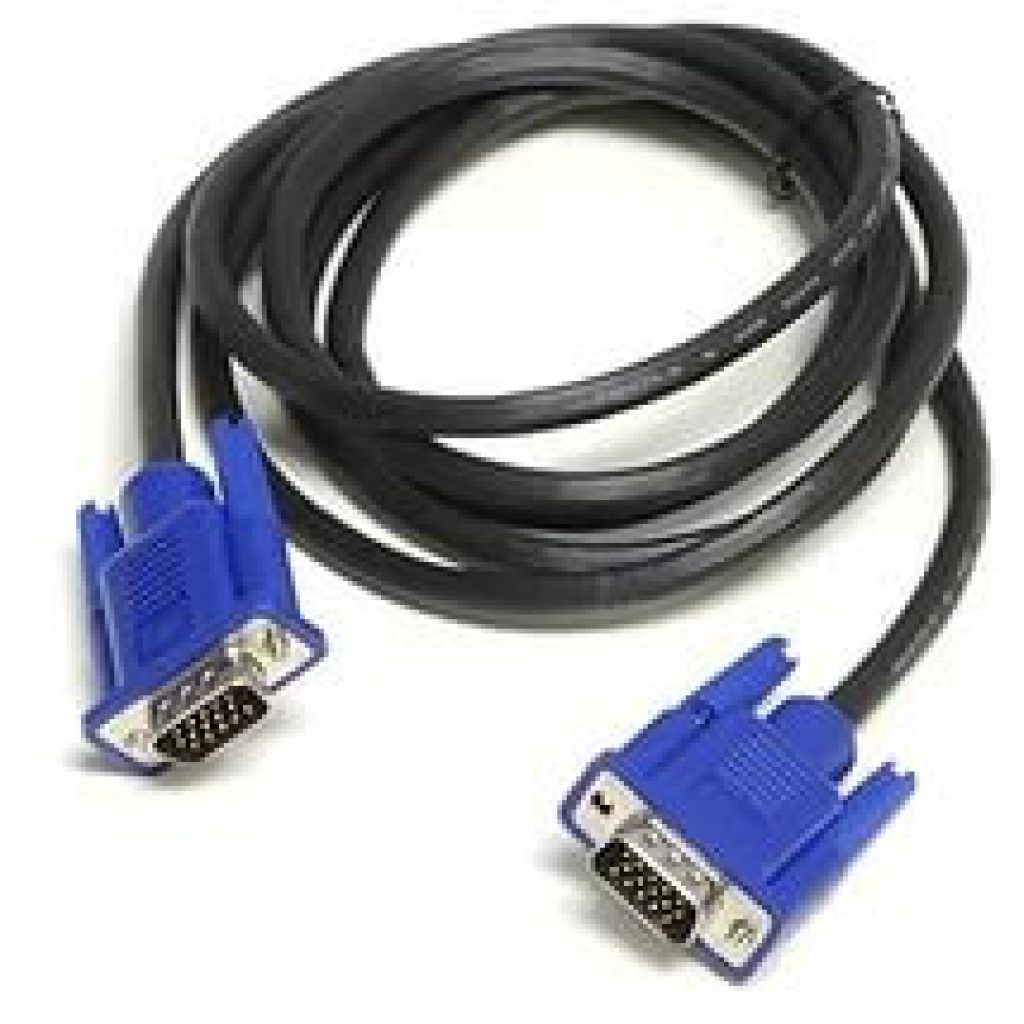
There are several ways out of the situation. You can connect a powerful audio system with a subwoofer to your laptop and enjoy high-quality surround sound. The second option is to connect sound card laptop with TV via RCA-connector, which is familiar to many as a "tulip". We connect the cable responsible for the transmission of audio, and leave the rest of the fittings unclaimed.
S-Video connection
Previously, this method was the most affordable. The S-Video slot was mandatory on every computer or laptop. Modern models may not have such an interface. It was abolished by the emergence of more advanced communication methods. This is not surprising. After all, viewing the same HD image via S-Video is not possible. And this interface is not suitable for audio signal transmission. Its connection is carried out with a cable through the S-Video connector or a Scart adapter, if there is no slot.

Wireless connection
The most innovative way to connect. Helps to avoid such inconveniences as cable length, quality loss through the use of adapters.
Laptops based on a processor-based Intel cores, have the function wireless transmission audio / video information called Wireless Display. The technology provides a maximum image of 1080 pixels.
To make the connection, you need to connect a WiDi adapter. Some TV models have a built-in receiver already. When using an external adapter, connect it to the HDMI port.
Wireless connection feasible via USB port. The Q-Waves gadget is connected to it Wireless USB AV, which comes with a special receiver - we connect it to the VGA or HDMI connector of the TV. When Q-Waves Wireless USB AV is connected to a laptop, the software for setting up the connection is automatically installed on the computer.

